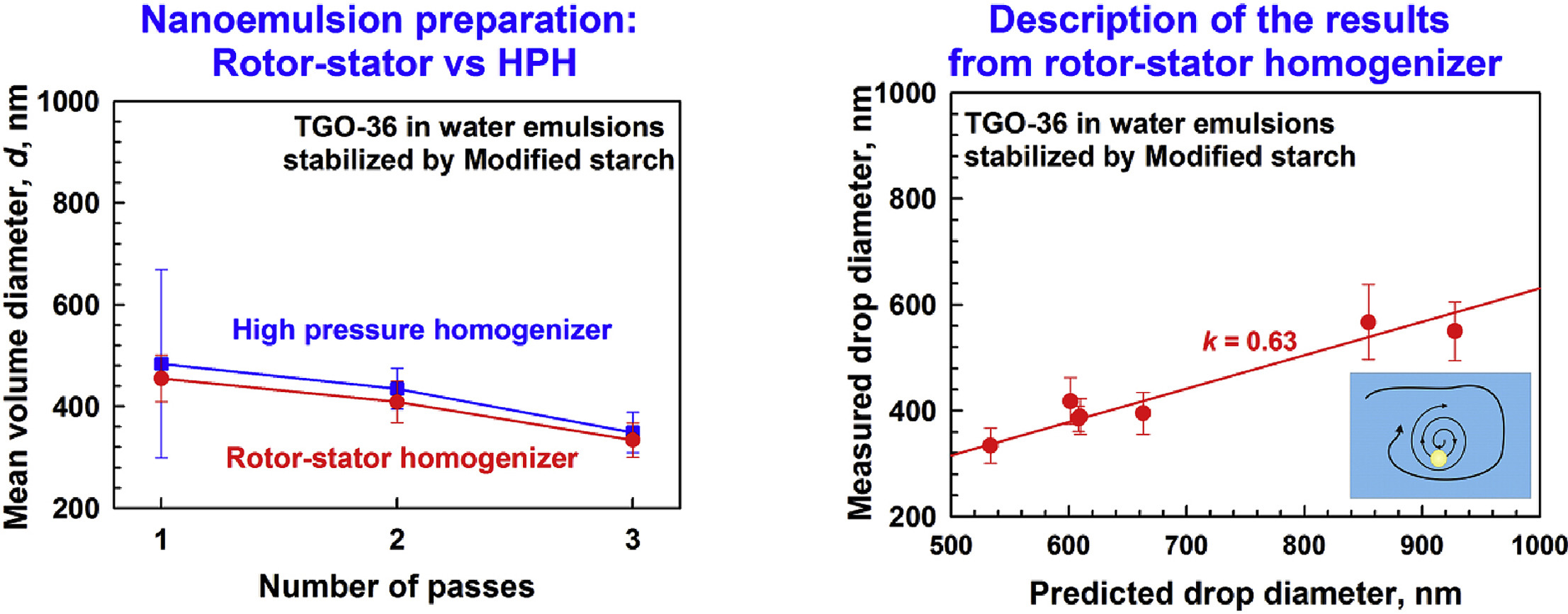
Dilek F. Gazolu-Rusanova, Ph.D.
Interests
- Contact angle, wetting
- Surfactants, micellar solutions, adsorption
- Emulsions, emulsification, micro- and nanoemulsions
Bio
Publications
Most recent publications
Process for preparing transparent emulsions
Food grade nanoemulsions preparation by rotor-stator homogenization
High-pressure homogenizers, typically used for producing nanoemulsions at the industrial scale, are energy and maintenance intensive, and limited to produce only dilute, low viscosity nanoemulsions. We propose an alternative approach to produce dilute to concentrated food-grade nanoemulsions with droplet size ranging between 100 and 500 nm using rotor-stator homogenization. Gum Arabic (GA) or modified starch (MS) was used as both viscosity modifier and emulsion stabilizer. GA and MS have relatively low surface activity compared to the common low-molecular-mass surfactants used typically for nanoemulsion preparation. The main differences between GA and MS are the lower viscosity of the GA solutions, compared to MS solutions, and the faster adsorption of MS, as compared to GA. The obtained results show that stable nanoemulsions are formed by rotor-stator homogenization when the rapidly adsorbing MS is used as emulsifier. Much larger drops are formed during emulsification with GA, which is due to significant drop-drop coalescence in the respective emulsions. The experimental results for the nanoemulsions prepared with MS are well-described by the theoretical expression for emulsification in turbulent viscous regime, after proper account for the effects of temperature and drop-drop interactions in the sheared emulsions.

Role of lysophospholipids on the interfacial and liquid film properties of enzymatically modified egg yolk solutions
This study aims to clarify and explain the similarities and differences in the behavior of adsorption layers of native egg yolk (EY) and enzymatically modified egg yolk (MEY) at a soybean oil-water interface. For this purpose, the interfacial tension and the surface dilatational modulus of EY and MEY solutions are measured and compared. The interactions between two adsorption layers, formed from these solutions on an oil-water or air-water interface, are also studied by optical observations of thin foam and emulsion films, formed in a capillary cell. The chemical composition, the electrophoretic mobility of the molecular aggregates, and the rheological properties of the egg yolk solutions are also characterized. Adsorption layers formed from MEY solutions display a faster rate of adsorption, lower dilatational surface moduli and higher equilibrium surface tension. The enzymatic modification of egg yolk also leads to formation of much thinner foam and emulsion films and to faster film thinning. The observed differences between EY and MEY are explained by assuming that the interfacial properties of MEY are governed mostly by the lysophospholipids and oleic acid, which appear as reaction products of the enzymatic modification of EY. The latter assumption is unambiguously proven by chemical analysis of the MEY solutions and by deliberate addition of lysophospholipids and oleic acid to the non-modified EY solutions. Even at relatively low concentrations, the lysophospholipids and oleic acid change the interfacial and film properties of the EY solutions, making them very similar to those of the enzymatically modified egg yolk.


